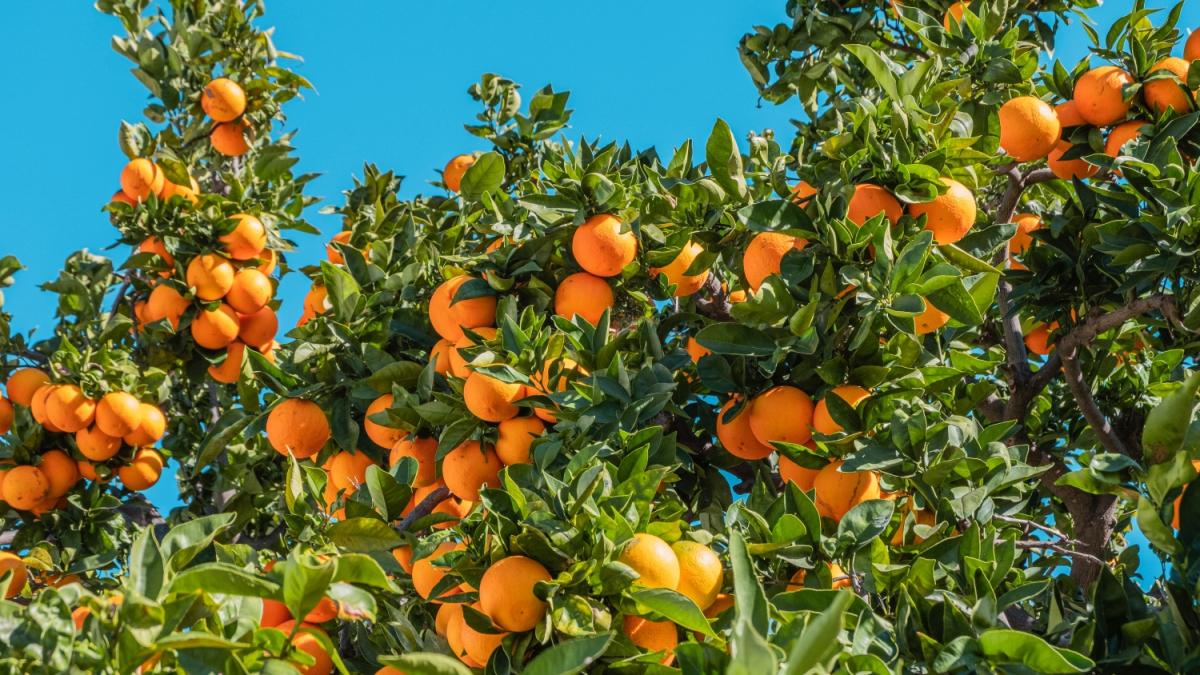You are here
Back to topSmaller Global Citrus Crop Expected for 2022/23

According to the Citrus: World Markets and Trade report recently released by the U.S. Department of Agriculture’s Foreign Agricultural Service, unfavorable weather conditions in the Northern Hemisphere have caused a decline in production across all citrus categories. Although output in the Southern Hemisphere has shown an overall increase this year, the report predicts that global citrus production in the 2022/23 season will fall by more than 4.8 million metric tons to an estimated 100.6 million metric tons, a year-on-year decrease of 4.6% compared with the 105.4 million metric tons registered in the 2021/22 season.
Mandarins/Tangerines
Owing to adverse weather conditions and significant declines in production in China and Morocco, the report anticipates that global mandarin/tangerine production in the 2022/23 season will fall to 36.9 million metric tons, a year-on-year decrease of 900,000 metric tons.
Even with production forecast at 26.5 million metric tons, down 2% from last year, China remains the world’s largest producer. The report predicts that domestic consumption will decline as exports rise, with Indonesia and Vietnam remaining China’s largest export markets. Increased production in Greece is unlikely to offset a reduction in Spain caused by high summer temperatures. Total output in the European Union, the world’s second-largest producing region, is estimated to fall by 4% to 3.035 million metric tons, leading to reductions in both exports and domestic consumption, while Morocco and South Africa are expected to remain the EU’s primary suppliers. In Turkey, where cold weather has had less impact than previously forecast, production is expected to rise slightly to 1.9 million metric tons, with exports remaining flat.

The report predicts a 32% decrease in production in Morocco, where high temperatures and water shortages have led to a reduced harvesting area. Domestic consumption and exports are expected to decline accordingly, and the European Union, Russia and the United States are set to remain the largest export markets.
With favorable weather conditions in California, U.S. production is expected to increase by 23% to 819,000 metric tons. An increase in exports is anticipated, with imports and domestic consumption falling.
According to the report, production in South Africa is forecast to increase by 41,000 metric tons to a total of 680,000 metric tons, representing a 12-year high. This increased production is primarily attributable to favorable rainfall providing sufficient irrigation for the main production areas. With more new plantings entering full production, further increases in consumption and exports are anticipated.
Production in Peru is expected to fall 20,000 metric tons to 550,000 metric tons, with exports remaining flat owing to a late season and a smaller harvest of early-maturing varieties. With new orchards coming into fruit and favorable rainfall boosting production, mandarin/tangerine production in Chile is expected to increase by 27% to 215,000 metric tons, with exports rising by 25% to 180,000 metric tons.
Oranges
Although Egypt is expecting a bumper orange harvest, the European Union, Turkey and the United States have all seen reduced production this season. Worldwide orange production in the 2022/23 season is anticipated to decrease by 5% year on year to 47.8 million metric tons.
With lower yields per tree this year, production in Brazil, the world’s top orange producer, is forecast to fall by 179,000 metric tons to 16.8 million metric tons. This reduced supply will mean that lower volumes are available for processing, and Brazil’s orange juice exports are expected to fall accordingly. China’s output is projected to reach a record 7.6 million metric tons because of increased acreage; however, exports are expected to contract amid rising domestic consumption. The unusually hot and dry summer in Spain and Italy will likely lead to lower production in the European Union, with output set to fall by 13% to 5.9 million metric tons. Fresh orange consumption, processing and exports are all expected to decline accordingly, with Egypt and South Africa remaining the EU’s primary orange suppliers.
Orange production in Mexico is forecast to fall by 395,000 metric tons because of a prolonged drought in the northeast of the country. In the United States, production is expected to drop to the lowest level in over 56 years, with citrus greening disease and hurricanes impacting harvests in Florida.

Benefiting from an increase in cultivation area and favorable weather during the fruiting season, orange production in Egypt is expected to increase by 600,000 metric tons, matching the country’s record of 3.6 million metric tons. With this increased production, the report predicts that the export volume will increase accordingly, with the main export markets remaining the European Union, Russia and Saudi Arabia. Production in Morocco, on the other hand, is anticipated to fall by 367,000 metric tons on account of poor weather conditions and water shortages during the growing season. Both consumption and exports are expected to drop by around one-third.
Favorable weather conditions in South Africa this season, coupled with a slight increase in the harvested area, have led to a minor increase in estimated production. Exports are expected to grow in tandem, reaching a record high for the third year in a row. With good weather conditions in Chile, orange production is forecast to increase by 10,000 metric tons to 174,000 metric tons, with an accompanying rise in consumption and exports.
Grapefruit
With unfavorable weather conditions and reduced production in China, Mexico, Turkey and the United States, the report predicts that global grapefruit production will fall by 158,000 metric tons this season, a decrease of 2%. Production in China, the world’s largest grapefruit producer, is expected to fall by 50,000 metric tons, while South African output is forecast to decrease by 4,000 metric tons.
Lemons/Limes
Owing to adverse weather conditions in Argentina, the European Union, Turkey and the United States, global lemon and lime production is estimated to decrease by 1.135 million metric tons this season, down 11% from last year, for a total of 9.069 million metric tons.
Images: Unsplash (main image), USDA Foreign Agricultural Service (body images)
This article was translated from Chinese. Read the original article.
















Add new comment